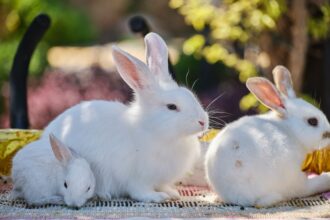Hamsters may be small, but they’re smart, curious, and capable of learning much more than most people expect. If you’ve ever wondered how to train a hamster or teach it simple behaviors, you’re in the right place. This guide covers practical hamster training tips and techniques, while also offering small pet training strategies that apply to guinea pigs, rabbits, and gerbils.
Why Train Small Pets?
Training offers more than just fun tricks — it builds trust, enriches your pet’s life, and helps correct behavioral issues. Whether you’re dealing with hamster biting habits or looking for ways to calm a nervous rabbit, using positive reinforcement for small pets can improve your relationship and their well-being.
Understanding Hamster Behavior
Before training begins, it’s crucial to understand common hamster behavior problems. Hamsters may bite out of fear, boredom, or stress. Correcting hamster behavior starts with a calm environment and consistent interactions. Begin by observing their natural rhythms and approaching slowly to avoid startling them.
Getting Started: Socializing Your Hamster
Socialization is the first step in teaching hamsters to play or interact calmly. Daily, gentle handling builds trust and confidence. Use hamster socialization tips like offering treats from your hand or talking softly during cage cleaning.
Step-by-Step Hamster Training Tips
- Start with Hand Taming: Let your hamster explore your hand. Place a small treat on your palm and wait patiently.
- Use Treat-Based Rewards: Positive pet reinforcement for hamsters means offering a small piece of fruit or veggie when they respond to commands.
- Teach Simple Commands: Once tame, begin with simple behaviors like coming when called using a sound or word.
- Set a Routine: Keep training sessions short (5-10 minutes) and consistent to avoid stress.
- Redirect Bad Behavior: If your hamster bites or chews on bars, offer safe chew toys and avoid scolding.
Teaching Hamsters to Play
Believe it or not, teaching hamsters to play is possible! Set up obstacle courses or tunnels and reward them as they explore. This boosts physical activity and keeps them mentally stimulated.
Small Pet Training Techniques for Other Pets
Many of these techniques apply to other small animals:
- Guinea Pig Behavior Tips: Use soft voice commands and treats to encourage interaction. Training tips for guinea pigs often start with learning their comfort sounds. Understanding guinea pig sounds helps you respond appropriately.
- Gerbil Socialization: Gerbils thrive in pairs or groups and enjoy obstacle-based games. Behavioral issues in gerbils, such as biting or hiding, often stem from overstimulation. Teaching gerbils tricks is easier with consistent routines.
- Pet Rabbit Training Guide: Rabbits are highly trainable. Rabbit litter training should begin early and involve placing soiled litter into their box to guide them. Training your pet rabbit to come or how to calm a nervous rabbit works best with quiet spaces and treats.
- How to Train Rabbits to Hop Through Hoops: Use a treat to guide them through a hoop slowly. With repetition, they’ll associate the action with rewards.
Addressing Common Behavioral Issues
- Hamster Biting Habits: Never punish biting. Instead, figure out the trigger — handling too soon, stress, or lack of space. Gently reintroduce handling with positive reinforcement.
- Gerbil Aggression Issues: Provide enough space, avoid overcrowding, and introduce gerbils carefully to avoid territorial behavior.
- How to Stop Your Rabbit from Chewing: Give them approved chew toys and block access to wires or furniture. Chewing is a natural behavior — redirect it, don’t suppress it.
Best Practices for Success
- Be patient: Every animal has its own pace.
- Use consistent commands: Avoid switching words or signals.
- Keep sessions brief: Especially for hamsters and gerbils.
- Watch for signs of stress: If your pet hides or freezes, take a break.
Wrapping Up: A Well-Behaved Small Pet
Training your small pet doesn’t require a professional background — just time, patience, and a lot of love. Whether you’re focusing on hamster behavior problems or guinea pig training methods, building trust and reinforcing good behavior pays off in the long run.
So whether you’re into teaching rabbits tricks, guiding gerbil socialization, or exploring training techniques for guinea pigs, the same core principles apply. Remember: small animals, big personalities, and endless potential for learning.






